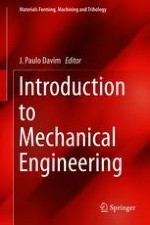2018 | OriginalPaper | Buchkapitel
12. Comparison of Non-conventional Intelligent Algorithms for Optimizing Sculptured Surface CNC Tool Paths
verfasst von : Nikolaos A. Fountas, Nikolaos M. Vaxevanidis, Constantinos I. Stergiou, Redha Benhadj-Djilali
Erschienen in: Introduction to Mechanical Engineering
Aktivieren Sie unsere intelligente Suche, um passende Fachinhalte oder Patente zu finden.
Wählen Sie Textabschnitte aus um mit Künstlicher Intelligenz passenden Patente zu finden. powered by
Markieren Sie Textabschnitte, um KI-gestützt weitere passende Inhalte zu finden. powered by
